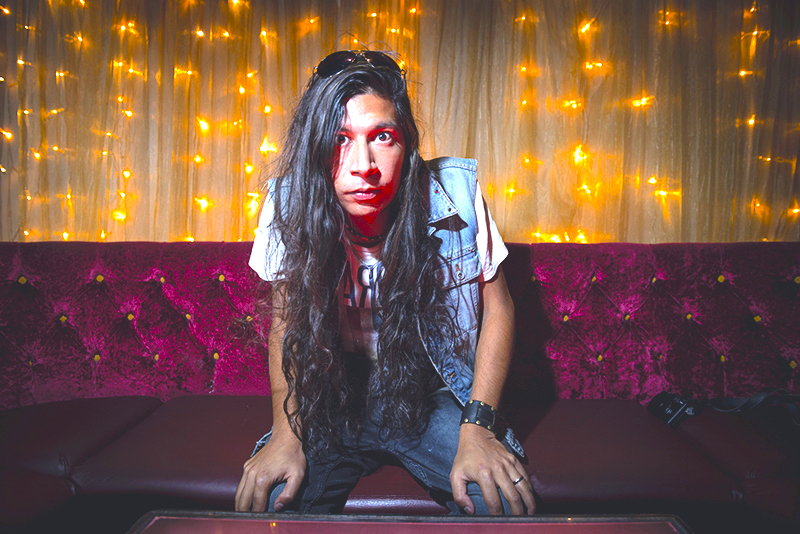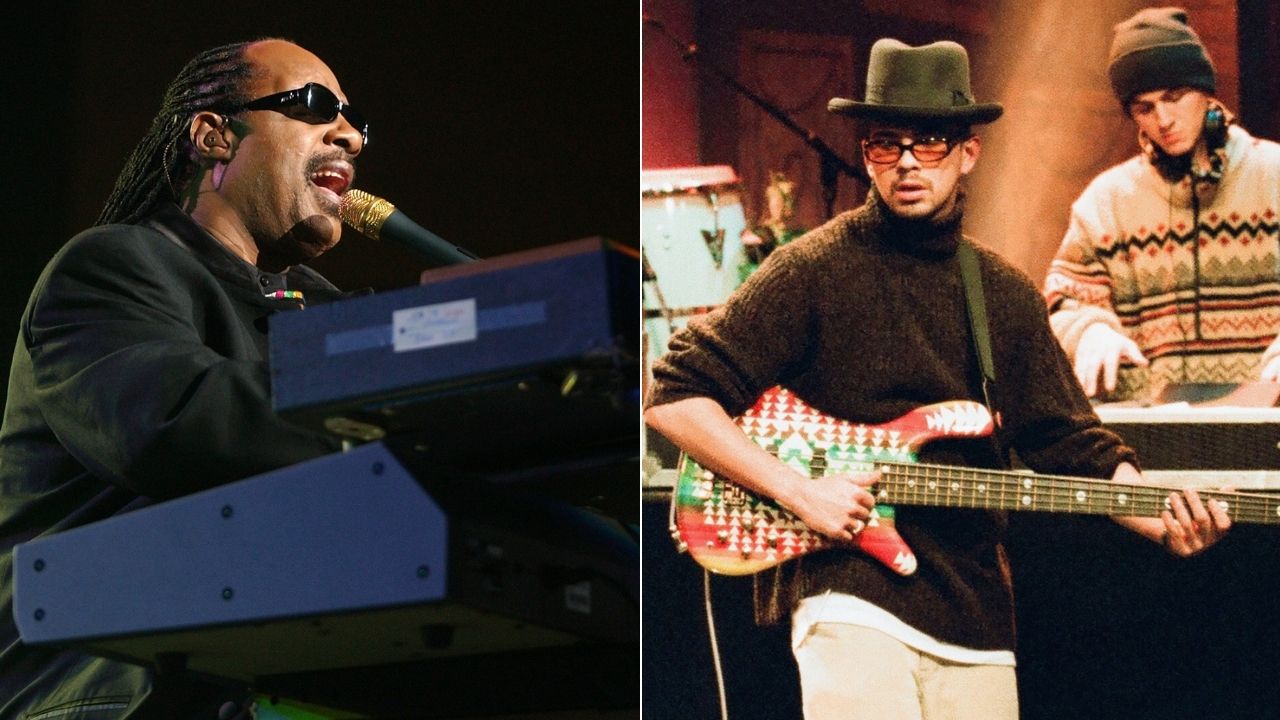“My friend found me a replica of John Frusciante’s Strat for €28,000. Spending that kind of money is ridiculous. It doesn't do anything for me”: Richard Z. Kruspe on why guitars are like kisses, reverse kill-switches – and the riff that launched Rammstein
Fresh from launching his new RZK-III signature model, the German fire-raiser discusses the Custom Shop guitar that changed his thinking on collecting – and how he manages to live and let live with colleague Paul Landers
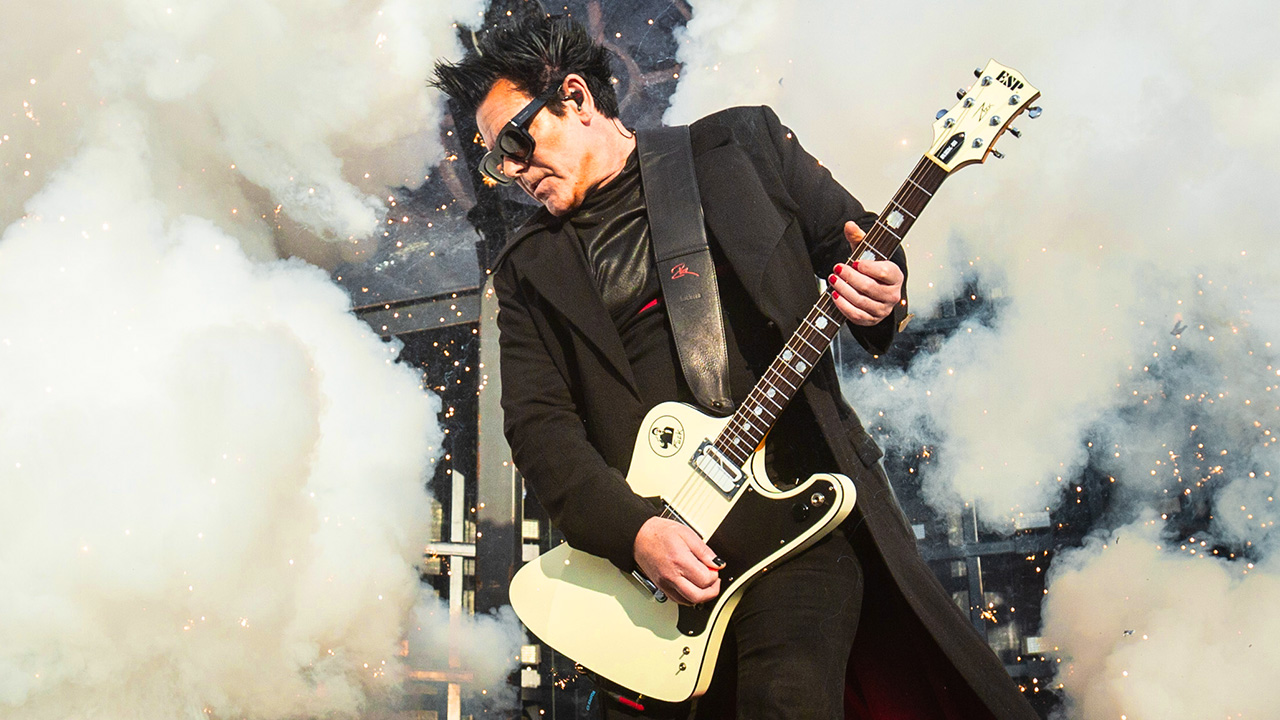
Richard Z. Kruspe has a thirst for fire. You can see it coming from every corner of the stage when he’s performing in Rammstein, and depending on how close you are to the front, you can probably feel it, too. You can even hear it in his riffs, which often sound like they were born inside a blast furnace, where the rhythmic clangs of machinery orchestrate the production of the toughest metal on earth.
Pick any song out of the band’s sizeable discography – from Tier, Du Riechst So Gut, Asche Zu Asche and Engel to Links 2 3 4, Rammlied, Hilf Mir and Ich Tu Dir Weh – and it’s easy to see how he’s turned the sounds of a working factory into some of the biggest industrial metal anthems of the modern age.
And just like any blacksmith or steelmaker, certain tools are required to complete the task at hand. Earlier this year, he announced the latest addition to his signature guitar line, the RZK-III, arriving in both Japanese ESP Custom Shop and Korean factory-made LTD forms.
While the first model was more of a Strat/SG hybrid and its follow-up borrowed heavily from Les Paul’s singlecut design, for this latest version he’s settled on ESP’s Phoenix shape. So what made him want to explore the world of offsets?
“Back in 2021, I made a video for the song Freeze My Mind from my Emigrate project,” he says, speaking to us from his home in Berlin. “I wanted a different kind of instrument. I was looking for a 70s vibe in terms of the body and Stefan Kühn from [European music distributor] Sounds Service suggested trying a Phoenix.”
He got on so well with the guitar that it planted the seed for his next design, which comes with his signature Fishman Fluence pickups – the neck humbucker replaced by a Sustainiac in the ESP version – a three-piece maple neck-thru and alder wings in an Olympic White finish. It might look retro and classic, but rest assured, in his hands it will become an invincible weapon of hellish war.
“During the shoot I noticed the guitar seemed to have a lot of testosterone!” he laughs. “It wanted to be played hard, in a good way. I found that very interesting. Different guitars will bring different things out of you. There’s a synergy between the instrument and the player.
All the latest guitar news, interviews, lessons, reviews, deals and more, direct to your inbox!
“It’s like kissing two different people: a kiss is a kiss, but each one is not the same. The same goes for guitars. That Phoenix gave me this very manly feeling and made me start thinking about building something new for the RZK range.”
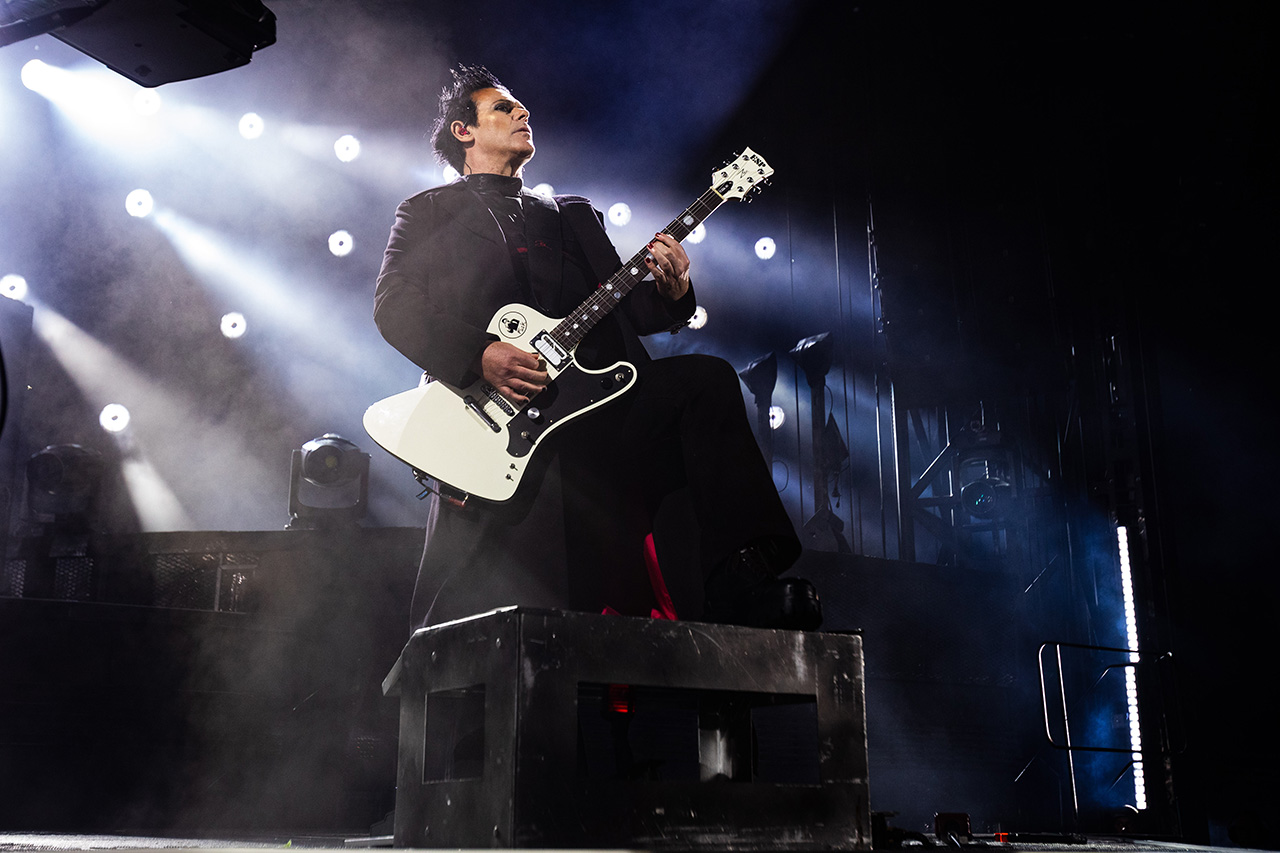
This latest signature is notable for being your first without a Floyd Rose…
“In the beginning, I used to love playing guitars with a Floyd Rose. It wasn’t even because of the Floyd Rose, it was because of the sound. Those guitars had a faster attack than ones with a stoptail piece or string-thru body.
“This time I said, ‘I want to do a try out,’ because it can be hard building prototypes with people in Japan. It can take a while. The stoptail won, though we ended up having to recess the bridge into the body to make it more comfortable for me to play.”
Fair enough. Does this one shoot fire, though?
“Well, you can try – it’s a free country still, I guess!”
When you grab a guitar, it doesn’t matter how expensive it is – something special needs to happen
The killswitch is interesting, because you said you had wired it the German way. What exactly does that mean?
“Every culture has a different rhythm. The English language is based on the in-between words. The German language is based on the ones, and that is reflected in music, language and beyond.
“The American way is with the sound on and the killswitch kills the sound. The German way is the opposite. You have no sound at all; the guitar has been silenced by a toggle, and when you push the button you hear the sound.
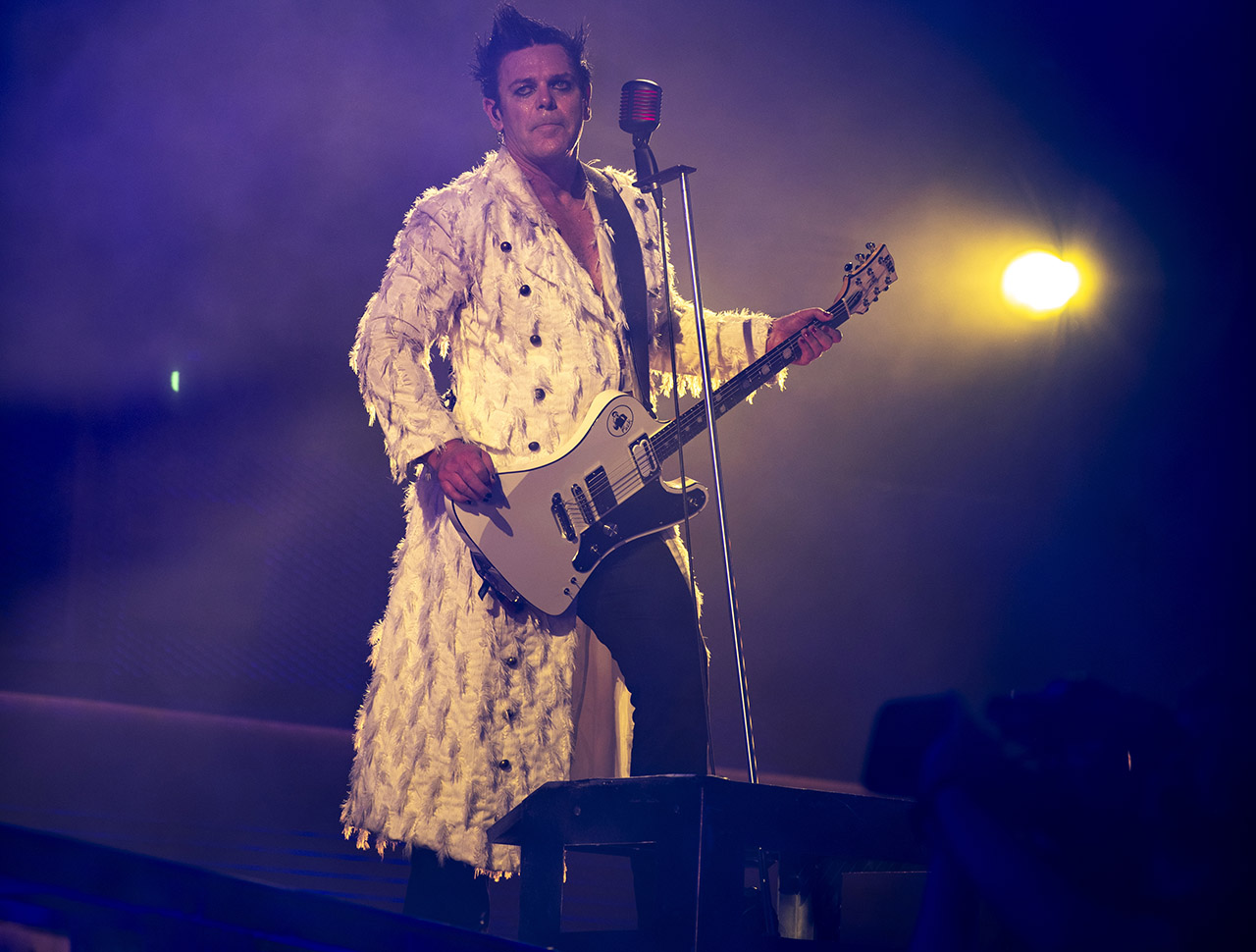
“It brings a different rhythm, which is good because I can choose to sustain the sound on the one rather than the in-between. I guess my one shouldn’t be called a killswitch because it doesn’t kill anything – it does the opposite and switches you on!”
You’ve been downsizing your collection over the years. What kind of guitars might we finding kicking around in the house or in the vaults?
“There is no collection – or, at least, I’m trying to minimize what’s left of it. Here’s a funny story: There was a big announcement from the Fender Custom Shop about a replica of John Frusciante’s 1962 Strat. He’s one of my favorite players, so of course I would love to have his guitar.
“I called a good friend at Thomann, asking if he could get me one. The answer was no, because it was a limited edition of however many [Masterbuilt models]. But in the end asked around and found one. I was like ‘So how much?’ and the answer was something like €28,000. In the end I said, ‘You know what, buddy? Thank you so much – but no thanks!’”
You weren’t comfortable spending that much?
“It’s not that I couldn’t afford the guitar. It was more that I would be collecting guitars like paintings. Spending that kind of money on a guitar is ridiculous; it doesn’t do anything for me. When you grab a guitar, it doesn’t matter how fuckin’ expensive it is, there needs to be synergy – something special needs to happen.
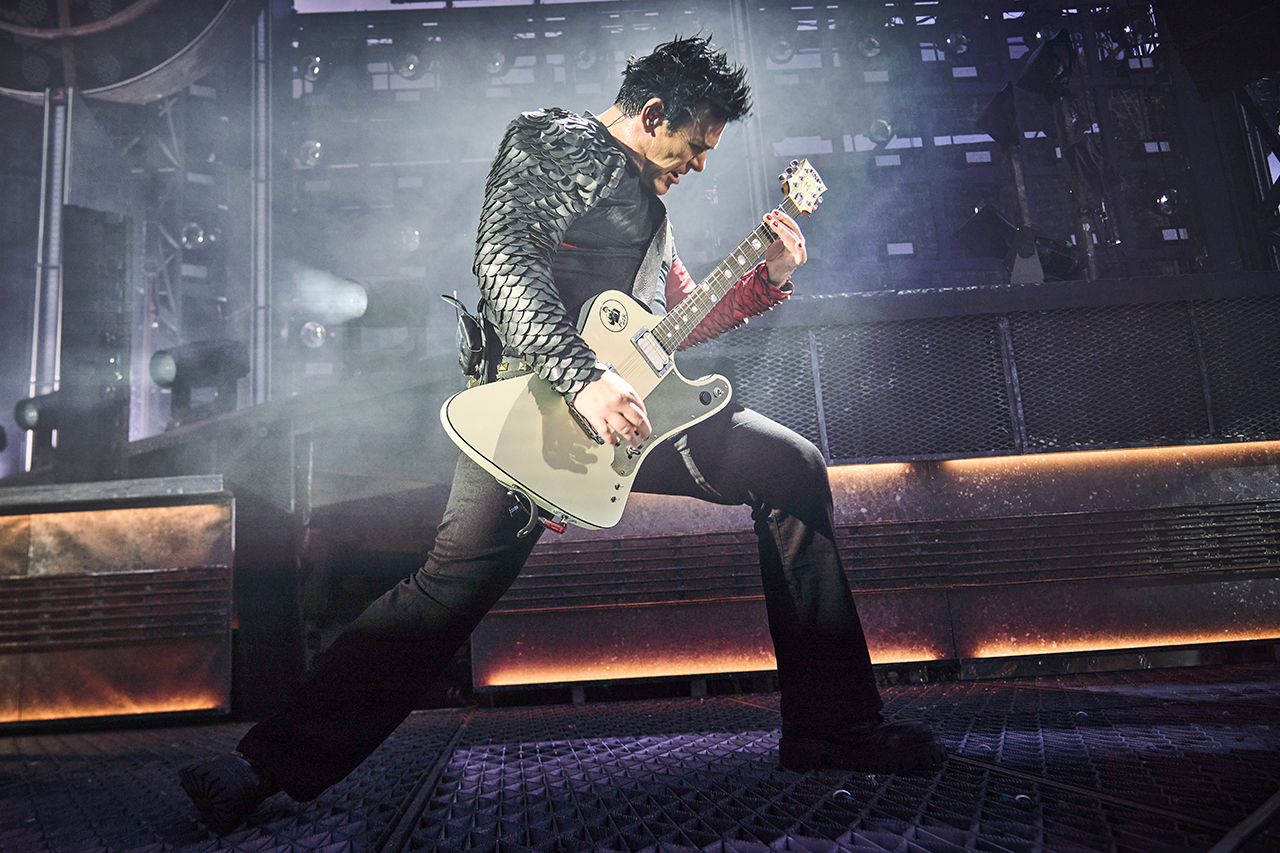
“You need to feel comfortable and it needs to speak to you. That can happen with a guitar that costs €500. Spending €28,000 doesn’t mean the guitar will have that special connection. I’ve distanced myself from all that. If I have a guitar, I just want to play it. Something that expensive might scare you into not touching it.”
Which ones did you end up keeping, then?
“All the ones I have a special relationship with. They are mostly ESP because those are the guitars I’ve used since the ‘90s. I have an old ‘70s Stratocaster which I got from a friend in the East, but that’s about it. I have a Godin acoustic, which is a great nylon guitar, though it does look a little weird.”
I watched Malcolm Young from the stage. Every time I play live, I fuck up once or twice. He didn’t – he was so switched on
It’s interesting to hear you mention John Frusciante – Rammstein and Red Hot Chili Peppers are musically worlds apart.
“It turns out Chad Smith is a big fan of Rammstein. He came to Berlin and visited our rehearsal room. I had the pleasure of jamming with him in there and I was like, ‘Wow!’ But it’s true: music-wise, Chili Peppers and Rammstein are very different. I can still appreciate music that is unique and guitar players who have a special touch.”
So what are your favorite things about John Frusciante’s playing?
“I really love his simplicity. He can get so much out of three notes and make it sound more impressive than other people playing 300. Maybe it’s because I’m not a fast player myself, so I’m more likely to appreciate that approach.
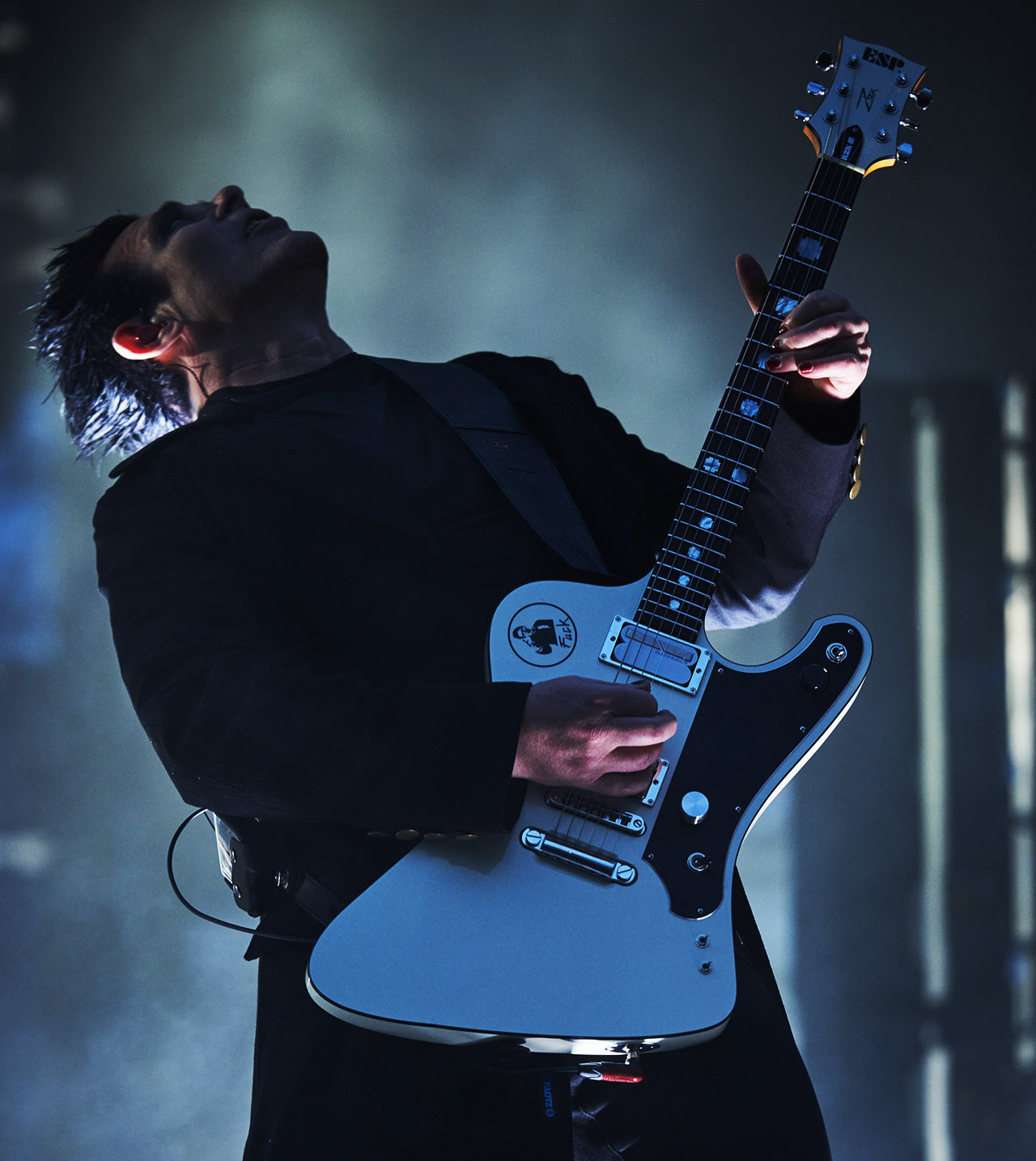
“Even though his sound would change record to record, he had this belief in simplicity and purity. He knows how to give each note enough space to react and touch people, rather than playing as many as he can and making people go ‘What?!’”
You’ve always described Malcolm Young as one of your biggest influences.
“I had the privilege of watching him from the stage. Every time I play live, I fuck up at least once or twice. But Malcolm didn’t – he was so switched on. The simplicity of AC/DC’s rock ’n’ roll is undeniable, and it still moves people to this day. It speaks to people in a very simple way. You don’t a lot of explanation; it goes right to your fucking heart.
“I appreciate people who have their own sound. I always loved Jim Martin from Faith No More. He had a very specific sound from the Marshalls he used, and you can hear that on albums like The Real Thing. He wasn’t the fastest player, but he had this unique style and sound that I always appreciated.”
You’ve written a lot of thunderous riffs over the years. Which one are you most proud of?
“I honestly don’t know. But I do remember the first time I played the Rammstein riff. It was actually when I was in a band called Orgasm Death Gimmick. It’s a very simple idea that still gives me goosebumps every time I play it. It’s one of my oldest riffs but a very specific idea that created the concept of Rammstein.
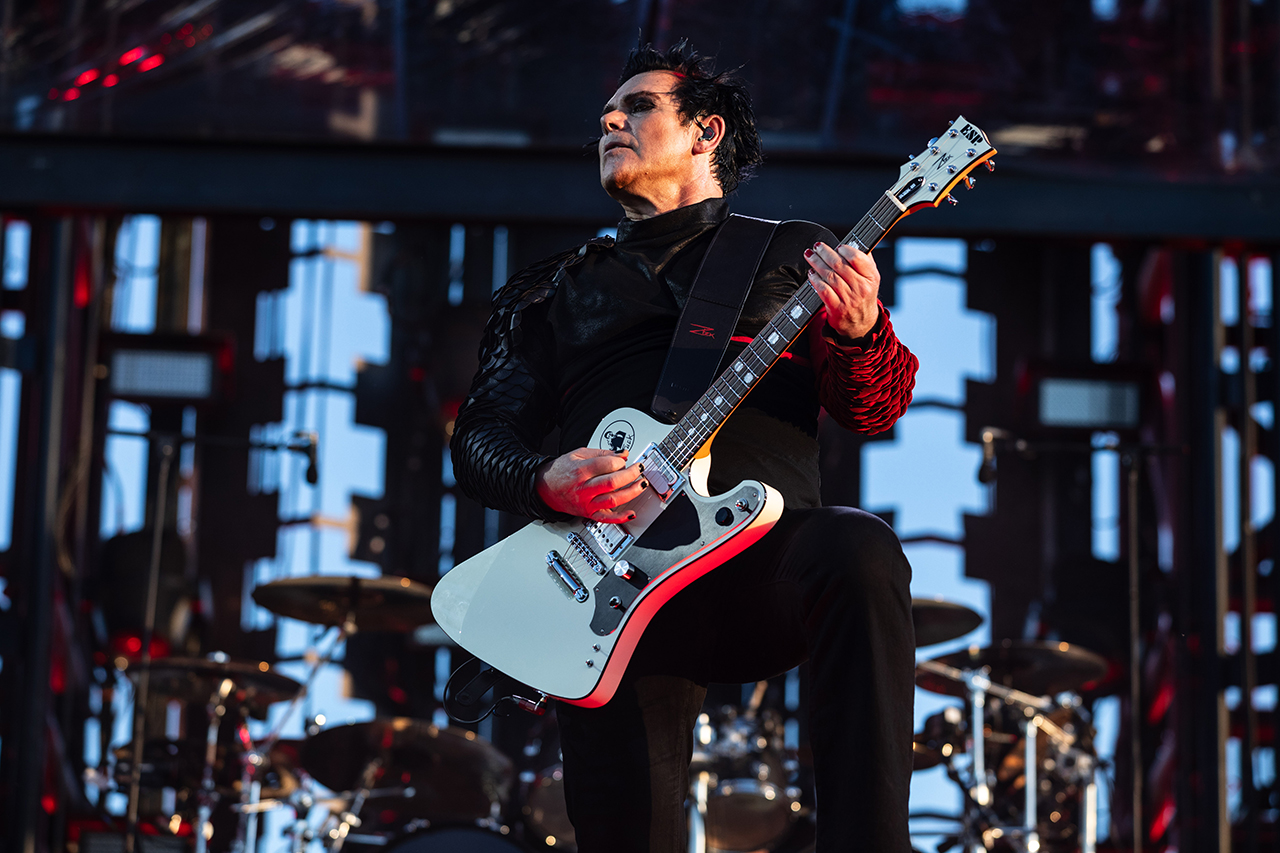
“Our riffs are quite simple. These days I see so many people widdling away and shredding. But in general, I think a guitar player should focus more on rhythm than soloing. All the players I loved were great rhythm players, even if some of them could solo too. The picking hand is the most important thing to me.”
What are the trademarks of a classic Rammstein riff?
“To create a Rammstein riff, you have to think simple but also think huge. There needs to be a lot of space. And finally... you need a lot of luck!”
So what would you say is the greatest riff of all-time?
“Whole Lotta Love. I mean, come on! It just doesn’t get better than that. That’s one thing I wish I had written.”
I used to drive people crazy with my live rig… then I thought, ‘Let’s try that Kemper thing!’ and life became so much easier
You and Paul Landers are one of the most dynamic forces in metal. How do you make each other sound better?
“It works best when he leaves the sound to me! No, I love Paul, but we are very different, like day and night. The polite thing to say is we let each other play to our strengths, in whatever positions that might be. We are not like Malcolm and Angus. We like different things – Paul is a SansAmp guy; I’m more into analog.
“I used to drive people crazy with my live rig in the early days. I wanted the same sound I had in the studio, so I bought all the preamps, mics, tents, iso-cabs. There was a whole truck just for my guitar equipment! After a while, I thought, ‘Fuck it, let’s try that Kemper thing!’ and life became so much easier.”
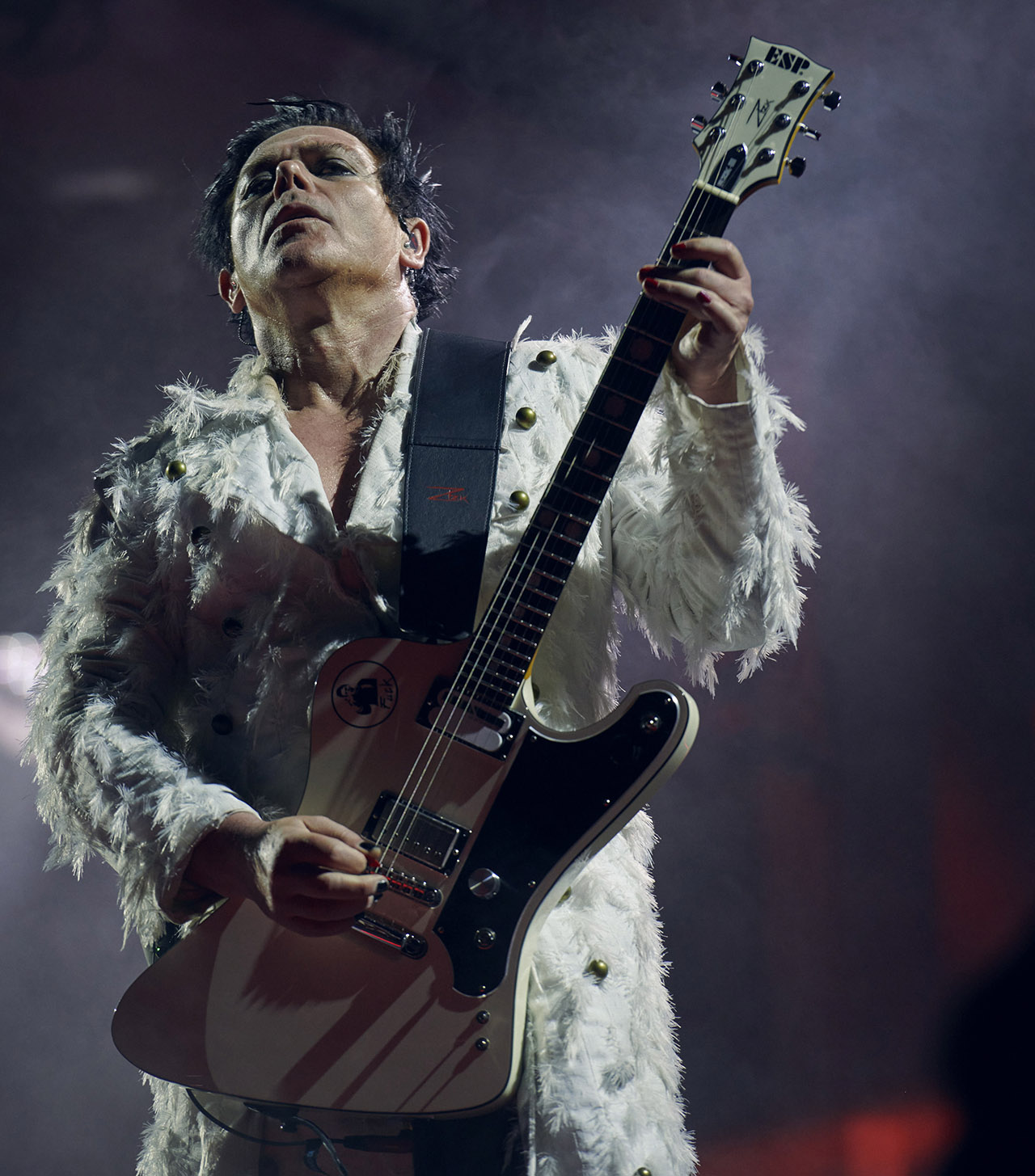
Like you say, it helps when two sounds come together as one.
“Exactly. We create one big sound together. That way we don’t have to argue over who is playing what. One goes left, the other goes right, and it’s the same information with our own unique tones. Very occasionally we’ll play different parts or in different octaves, but mostly we’re doing the same thing together.
“It can be a struggle, to be honest. It’s not easy having another guitarist with their own opinion about music. It takes a lot of communication and listening. Sometimes you need to put your ego to one side and let the other person lead. It’s a compromise – but sometimes those compromises will lead to good things.”
Speaking of good things, what’s next for Rammstein?
“There’s an old saying that I would like to repeat: if you want to make God laugh, tell him your plans! So there you go.”
Amit has been writing for titles like Total Guitar, MusicRadar and Guitar World for over a decade and counts Richie Kotzen, Guthrie Govan and Jeff Beck among his primary influences as a guitar player. He's worked for magazines like Kerrang!, Metal Hammer, Classic Rock, Prog, Record Collector, Planet Rock, Rhythm and Bass Player, as well as newspapers like Metro and The Independent, interviewing everyone from Ozzy Osbourne and Lemmy to Slash and Jimmy Page, and once even traded solos with a member of Slayer on a track released internationally. As a session guitarist, he's played alongside members of Judas Priest and Uriah Heep in London ensemble Metalworks, as well as handled lead guitars for legends like Glen Matlock (Sex Pistols, The Faces) and Stu Hamm (Steve Vai, Joe Satriani, G3).
You must confirm your public display name before commenting
Please logout and then login again, you will then be prompted to enter your display name.
